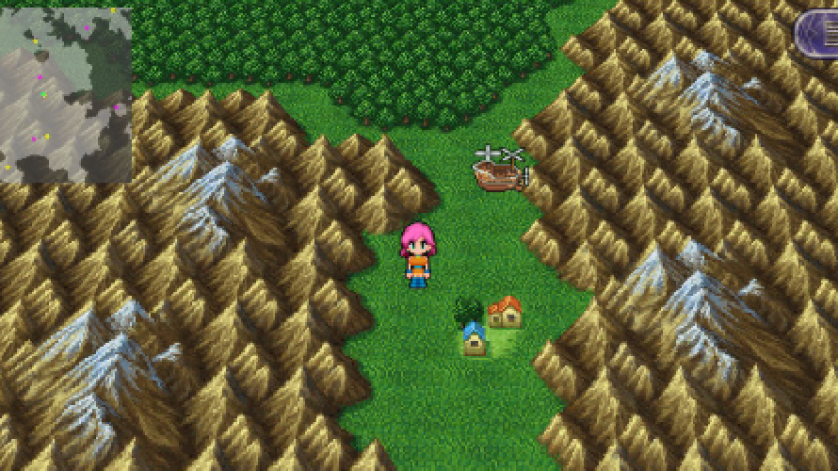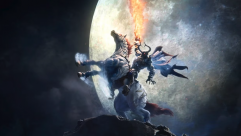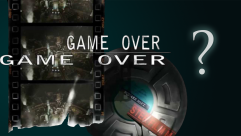
We recently got a taste of what the latest Final Fantasy – consciously ubiquitous in its ten year absence – might be like once it is finally released. And no, I’m not referring to the Platinum Demo. While it was impressive to see the updates to the combat system, and the general feel of the demo was fun, pretty skyboxes do not invoke a sense of wonder. No, I am referring to Episode Duscae, the demo we paid $40 for, which for some inexplicable reason was bundled with a dolled-up Type-0.

Episode Duscae was actually very impressive, especially as far as demos go. It’s not like the good old days of Shareware – where literally an entire portion of the game, sometimes as much as 1/3rd, would be given away for free in attempts to siphon cash out of your parent’s credit card – but it does stand up as one of the most substantial demos for a Final Fantasy game we’ve ever seen. Duscae gave us a massive open world to explore: full of sidequests, monsters to slay, and even a couple of small dungeons to traverse.
It’s clear the developers know the importance of delivering the feel of that open world, which has become an old hat by now – sandbox open worlds are the order of the day for AAA gaming. Whether you love roaming through the wilds of Tamriel in the Elder Scrolls games, or dying in a variety of high-speed collisions in Grand Theft Auto, the open world is something with universal appeal. We feel connected and fully immersed in a world free of load times.
It is true that open worlds are the next logical step, especially since we are finally making it out of the awkward in-between phase of Final Fantasy X and XIII’s respective “pretty line” worlds. But while it may seem anachronistic, I feel like the shift to a fully immersive world is missing something basic yet profoundly connected to the classic RPG experience: the overworld. An overworld map may seem positively quaint in an age where you aren’t considered next-gen unless you can actually count every individual blade of grass in between you and the next soon-to-be corpse, but I argue that leaving the overworld behind has robbed us of some great things that we took for granted.

A Sense of Scale
I want to start with an exercise you can do at home. Get a piece of paper or two and something to draw with. You don’t have to be a super good artist, just follow along as best you can. I want you to draw for me a rough estimation of the world map from Final Fantasy VII. Assuming you’ve played it all the way through even once, you should be able to get the basics down pat – 5 major landmasses: east, west and north continents, the Wutai island to the west of Nibelheim, and the Mideel archipelago south of Ft. Condor. Maybe you remembered the Cactuar Island, Goblin Forest, and the resting place of Knights of the Round; if so, good for you.
Now draw me the world map from Final Fantasy X. Unless for some reason you have the world map as your desktop wallpaper or spent inordinate amounts of time staring at the airship hub, this is probably more difficult. Here’s how it goes for me: Uh, Besaid Island…Kilika Island…giant hot dog continent.

“Well, what are you on about?” I hear you asking. “So we’re not cartographers. Final Fantasy X still gave us a much closer and more personal look at the world we were in.”
Did it though? I mean, I love X but the personality of the world we got could have been entirely maintained, and probably enhanced, through the use of a traditional overworld map. In fact, I argue that the design may have ended up better in the long run if we didn’t have to have those “nothing” spaces to denote travel time. You know what I’m talking about: the Mi’ihen Highroad and the area around Djose Temple (and to a lesser extent the Calm Lands) – the “pretty line”. Now, Final Fantasy X masked a great deal of that through clever use of story and just enough variety in the terrain to remain interesting. But outside of a handful of dungeons, how many branching paths do you remember actively exploring in the game? The closest we got to an open world was the Calm Lands, and it was basically a giant field (a design that Final Fantasy XIII would later use and expand for its Chapter 11 apology for the rest of the game).
If the plan was to begin paving the way for worlds where we were truly invested in the landscape around us, and didn’t feel cheated for experiences by the scaled-down overworld, perhaps a more open world would have been preferential. This is chiefly what Final Fantasy XII did right. Its open world and variety of terrains gave the world a massive and epic feel, and remained immersive even with those dreaded loading times.

A Sense of Dread
This might seem an odd and personal point to make, but it’s an editorial. Besides, I think I can sway you to my way of reasoning. You know what always got me excited with the older Final Fantasy games, and old RPGs in general? When there was something on the World Map I knew was important and it filled me with that slight sinking feeling in the gut as I approached it. That worried sensation of “Am I ready for this?”
Remember playing Final Fantasy IV and flying around the overworld in your brand new airship? You soar through the skies to the lower left-hand corner of the map, and your peaceful adventure is interrupted by this massive tower. You know at some point you are going to be at this tower and it is going to be an important part of your adventure. How about your first time approaching the N-Zone (Interdimensional Rift) in Final Fantasy V?

The Playstation era took the overworld game to the next level. Starting with Final Fantasy VII, there were other things roaming around the world map. The most terrifying for me as a young lad was the ever-present shadowy visage of Emerald Weapon swimming around in the already pretty intimidating underwater map. Though, definitely, I must give props to Ultima Weapon’s floating nightmare, Diamond Weapon’s ambling presence, which definitely knew how to amp up tension, and Ruby Weapon’s little head poking out of the sand. The visage of the Lunatic Pandora and Galbadia Garden in Final Fantasy VIII also come readily to mind.
And Final Fantasy IX took it a step further with weather effects on the overworld. First, the Mist that enveloped a great chunk of the overworld was its own level of creepy, but the rains of Burmecia, the whirling sandy tornado of Cleyra, and the various elemental shrines each offered their own bouts of the jibblies.

One final thing is that a sense of foreboding can be obtained by separation and isolation, which is harder to capture in a non-overworld. The Deep Sea Research Center in Final Fantasy VIII is all nice and tucked away in the corner of the map, and when you first stumble upon it you immediately know “something important is here.” Round Island from Final Fantasy VII is similar. Final Fantasy IX has a cute variant with the Chocobo Paradise. When we pop into the Omega Dungeon in Final Fantasy X and are told it’s far off the beaten path, a bit of that connection is lost.

A Sense of Wonder
Lightning Returns is a beautiful game with some wonderful scenery. The Wildlands in particular have an ethereal beauty to them as you traverse field, forest and canyon. Episode Duscae in similar fashion presented us with that amazing open world to freely explore within the set, and extremely liberal, boundaries (unless you were cool and got the car to push you out of bounds and found Titan, but hey). Many fans of the newer style say you just can’t evoke the same marvel from an overworld as you can from seeing the world stretch out before your very eyes. There is some merit to this, and I feel like it is chiefly why developers have been shying away from the overworld design in recent years. But I don’t know that it’s fair to say that the overworld is devoid of enchantment.
For starters, when we lose the overworld we lose the overworld theme, which is very often the main theme of the game (except in the case of Final Fantasy VIII). These themes also do a wonderful job of setting the tone for the entire game, be it adventurous (Final Fantasy, Final Fantasy III, Final Fantasy V), somber (Final Fantasy II, Final Fantasy VI, Final Fantasy VIII), or contemplative (Final Fantasy IV, Final Fantasy VII, Final Fantasy IX).

Traversing the overworld is also one of the most remarkable things about the traditional design. Who hasn’t torn the sky a new one upon getting their first airship? Who hasn’t spent inordinate amounts of time under the sea, or on it? Or on the back of a chocobo? Or as a passenger in a dune buggy, car or train? Perhaps the thing people miss the most about the loss of an overworld was what has happened to the airship. It went from sky-soaring fun to hub world and, finally, to just gone altogether.
Furthermore, the overworld always went above and beyond to show some artistic flair for the various worlds. The dusky plateaus and switchbacks near Cosmo Canyon, the frosty plains and islands of Esto Gaza, the rails of Galbadia. The land was always well thought out, and the little touches are what made the world feel alive. You remember how a great chunk of the land of The Forgotten Continent in Final Fantasy IX was essentially open space, save for the Chocobo Lithographs? And yet they went above and beyond in giving us small islands, random scattered bits of rock – the shape of a land over time.
Then there are those bits of the world that were just there for the sake of that one person who went out of their way to find them. Not hidden dungeons or towns, but hidden geography. When you got the airship, did you ever go to that one plateau that had nothing on it, but you just wanted to see what was there? Did you ever sail around to a corner of the globe simply to say you did? When all signs pointed you in one direction, did you go off in another just to see what was there? Well, if you have, then you know that a simple overworld can be a wonderful thing indeed.

Conclusion
I appreciate how this may seem like the nostalgia-blind ramblings of a romantic. I want to stress that I am not against the new design of world maps at all. I, like you, can’t wait to go buzzing around in my flying Batmobile while listening to the Distant Worlds remix of Johnny C Bad. And as for my desire to give myself a heart attack, I am quite excited by the possibility of seeing a massive creature on the scale of Weapon towering over me in the open world.
Moving forward and giving us this deeper, more intimate connection with our world (rather, literally seeing the forest for the trees) is without a doubt a good direction to be going in. But for the time being, it does mean we will be losing certain things that were inherent to the old design philosophy. Even so, as we gear up for both Final Fantasy XV and the Final Fantasy VII Remake, my level of excitement grows with each passing day. And just like my first tentative steps outside of Midgar, I can’t wait to see what’s over the horizon.
The author would like to thank RedFFWolf for his assistance editing this article.







No comments yet
Log in or Register
Author, thank you very much for your article. I really enjoyed reading it. Yet again one mindful and explicit point of view. 🙂